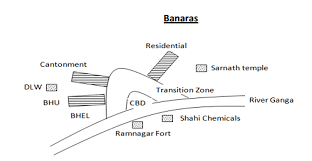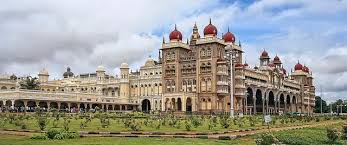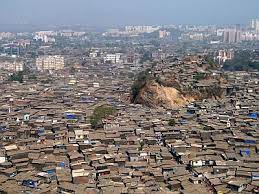Indian cities exhibit a diverse range of morphologies, reflecting the complexities of historical, cultural, social, and economic factors. The morphology of a city refers to its physical form, spatial organization, and structural patterns. In this article, we will explore the morphology of Indian cities and we will discuss their distinct characteristics and the factors that shape their spatial structures.

Historical Factors
Indian cities bear the imprint of their historical development. Ancient cities, such as Varanasi, Jaipur, and Kolkata, often feature a compact layout, with narrow streets and dense cores. These cities evolved organically over centuries, influenced by factors such as defense, religious significance, trade, and colonial influences. The historical factors have contributed to the presence of heritage structures, mixed land uses, and distinct architectural styles within these cities.
Colonial Legacy
The morphology of many Indian cities reflects the influence of colonial rule. Cities like Mumbai, Chennai, and Kolkata were major centers of British administration and trade. They often showcase a distinct European-inspired urban form with organized grid patterns, wide roads, open public spaces, and monumental buildings. The colonial legacy has left a lasting impact on the spatial structure and architectural character of these cities.

Urban Sprawl
Rapid urbanization and population growth have led to the expansion of Indian cities, resulting in urban sprawl and the emergence of suburban areas. Peripheral areas witness the proliferation of residential colonies, commercial centers, and industrial zones. This urban sprawl is characterized by low-density development, extensive road networks, fragmented land uses, and challenges related to transportation and infrastructure provision.

Informal Settlements
Indian cities are also characterized by the presence of informal settlements, commonly known as slums or squatter settlements. These areas often emerge as a response to housing shortages, rural-urban migration, and the lack of affordable housing options. Informal settlements exhibit a haphazard and unplanned morphology, with overcrowded dwellings, narrow alleyways, and limited access to basic amenities. They pose challenges in terms of urban planning, housing, and infrastructure development.
Central Business Districts (CBDs) and Commercial Centers
Indian cities typically have vibrant central business districts (CBDs) or commercial centers that serve as economic hubs. These areas are characterized by high-rise buildings, office complexes, retail establishments, and financial institutions. CBDs often feature a dense and compact morphology, with a concentration of economic activities and mixed land uses.
Modern Town Planning
In recent years, urban planning practices have played a role in shaping the morphology of Indian cities. Modern town planning principles aim to create sustainable, well-connected, and livable urban spaces. These principles involve zoning regulations, open green spaces, efficient transportation networks, and the integration of smart technologies. Examples of planned cities in India include Chandigarh, Gandhinagar, and Navi Mumbai, which showcase a more organized and structured morphology.
Conclusion
The morphology of Indian cities is a fascinating blend of historical, cultural, colonial, and contemporary influences. Each city has its unique spatial structure, reflecting its historical evolution, urban growth, and planning interventions. Understanding the morphology of Indian cities is crucial for effective urban planning, infrastructure development, and the creation of livable environments. By embracing the diverse morphologies and harnessing their potential, Indian cities can strive towards sustainable and inclusive urban development that meets the needs and aspirations of their residents.